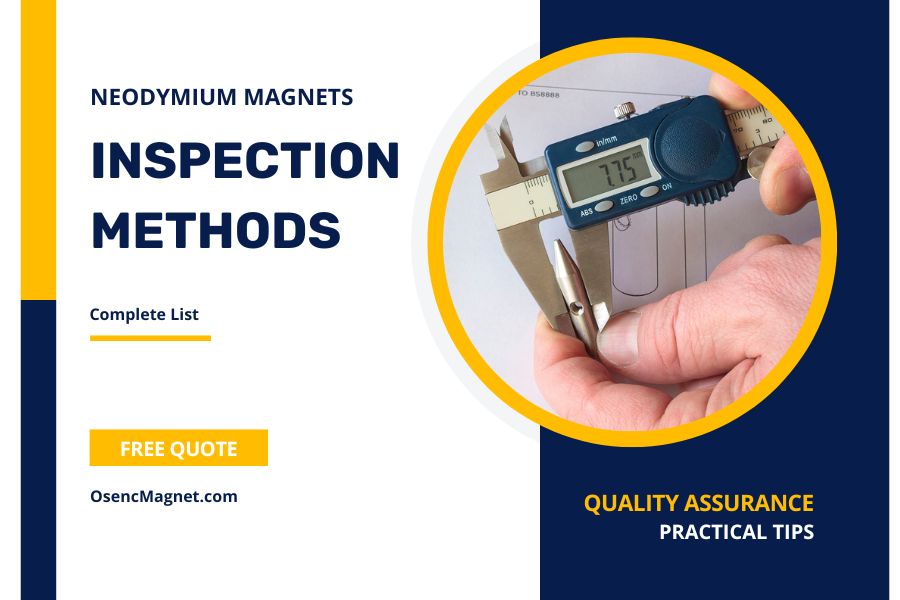When it comes to purchasing neodymium (NdFeB) magnets for your manufacturing needs, quality should be at the forefront of your decision-making process. As a leading neodymium magnet supplier, Osenc is dedicated to providing top-quality magnets that meet stringent industry standards.
In this blog post, we will guide you through the essential quality inspection methods for neodymium magnets. By understanding our quality management practices, you can be confident that Osenc is a reliable supplier for your needs.
The quality of NdFeB magnets can be evaluated from two main aspects:
- Magnet performance
- Magnet appearance
Magnet Performance
Magnet performance is determined by several key factors, including remanence, coercivity, and magnetic energy product grade. To ensure that you’re getting the best possible magnets for your application, it’s important to understand the factors below.
1). Remanence
Remanence (measured in Gauss) is the residual magnetism that remains after an external magnetic field is removed. A higher remanence indicates a stronger magnet.
2) Coercivity
Coercivity refers to the resistance of a magnetic material to demagnetization. Higher coercivity means the magnet will be more resistant to demagnetization under adverse conditions. Coercivity can only be measured using a magnetic property tester, which might not be available to every user.
3) Magnetic Energy Product Grade
This grade represents the maximum energy that can be stored in the magnet. It is typically indicated by a letter and number combination (e.g., N35, N42, N52). Higher numbers signify stronger magnets.
Magnet Appearance
Inspecting the physical appearance of the magnets is an essential part of the quality evaluation process. Here are five aspects to consider:
1). Pockmarks
Examine the magnet for any bubbles, scars, plating tumors, slag layers, or local over-thickness. These imperfections can affect the magnet’s performance and longevity.
2). High Edges
Check for chipped edges or material residues, as these can compromise the structural integrity of the magnet.
3). Scratches
Look for knife marks, line marks, or nail scratches, which can indicate that the magnet has been mishandled during manufacturing or transportation.
4). Cracks
Inspect the magnet for any cracking, as this can significantly impact its performance and durability.
5). Sand Eyes
Check for pinholes, air holes, or particles, as these can negatively affect the magnet’s performance. Additionally, examine the magnet for missing edges, intact plating, and adherence to design requirements.
In cases where a stronger magnet is required, the demagnetization curve can be analyzed to measure the magnet’s magnetic properties more accurately.
Conclusion
Understanding the methods to detect the quality of NdFeB strong magnets is crucial when selecting a reliable supplier. We hope this comprehensive guide helps you identify the quality of neodymium magnets quickly and effectively. At Osenc, we are committed to providing our customers with the highest quality magnets to meet their diverse needs. Reach out to our expert team for further assistance or to discuss your specific requirements.

